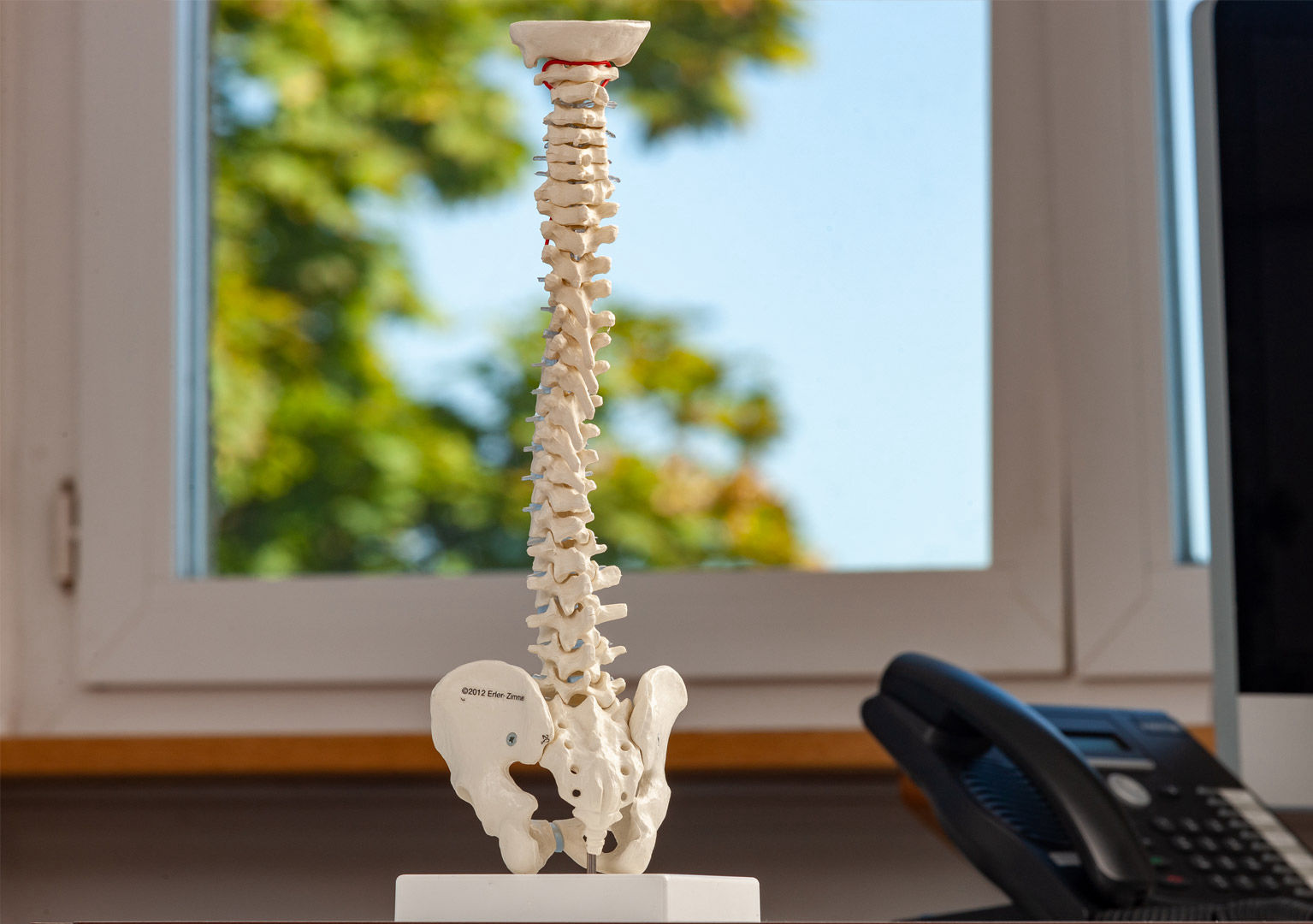What are facet joints?
The facet joints are small paired joints at the top and bottom of each of the vertebral arches which enclose the spinal canal. Together with the intervertebral discs between the individual vertebral bodies, they enable segmental movements of each individual vertebra in the lumbar spine.
Like all joints, spinal facet joints have a cartilage surface and a connective tissue joint capsule. The joint capsules of the lumbar vertebrae are covered by a firm, yellowish connective tissue inner fascia, the ligamentum flavum (= yellow band), which runs alongside the spinal canal. Between two facet joints of the lower lumbar spine, the sciatica nerve roots run from the leg through the spinal canal to the brain.



